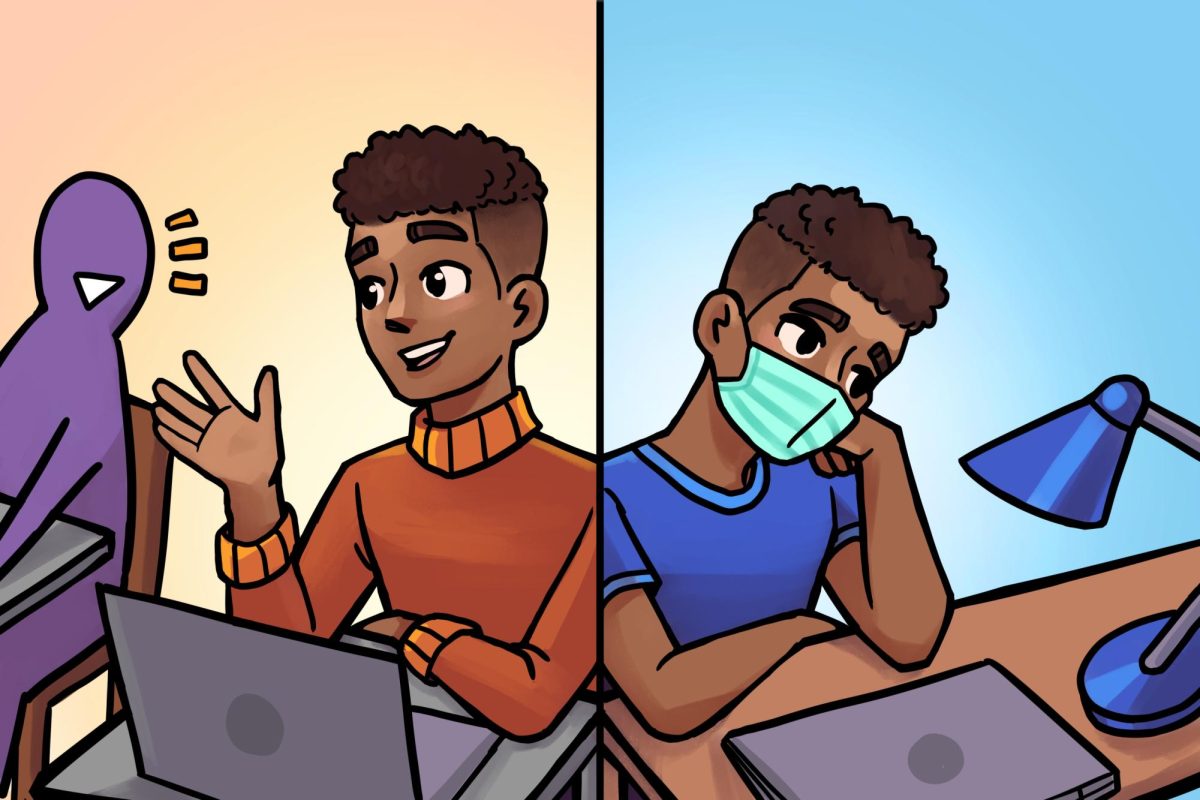As another semester comes to a close, I’m compelled to look back on the history of my relationship with education — especially during the last four years since the end of the COVID-19 pandemic. It’s been surprisingly jarring to reflect over just a couple of years of schooling and realize that so much has changed. The more obvious differences lie in the switch over to Zoom, but the true impact of this experience cuts much deeper.
I spent the second half of my sophomore year and the entirety of my junior year during high school online, and the experience permanently altered my perspective on school, as well as the way that I learned.
Given that exams were almost all completely open note, the process of actually studying was something I had to relearn during my senior year of high school — an experience that I don’t believe was exclusive to myself. This adjustment period combined with educational setbacks due to time lost in classrooms seemed to ripple across classrooms everywhere.
The change to an alternative education is one that also clarified previously existing inequities in schools across the country.
It’s no surprise that The New York Times reported a drastic drop in educational progression in the years following the pandemic. However, another sidelined effect of COVID-19 has been a widening knowledge gap between wealthy and poor schools.
Get The Daily Illini in your inbox!
Before the pandemic, the richest school districts in the U.S. were close to two years ahead in math test scores. As of 2023, they are months behind the national average. The same goes for less affluent districts, where schools that were already two years behind suffer from even more delayed progress compared to their wealthier counterparts.
The already growing economic divide between students has become amplified by this life-altering event, and it leaves in its wake an even greater obstacle for young minds to overcome than before.
Stunted learning growth isn’t the only aspect of education that has suffered since 2020. The term chronic “absenteeism,” used when a student misses 10% or more of the school year, has become more and more frequent over the past four years.
One NPR story reported that rates of chronic absenteeism have increased 12% since COVID-19. In fact, about one in four students were chronically absent in 2023. Although studies have shown that absences started to decline in the past two years, rates are still significantly higher than ideal. These rising absence rates again appeared to be higher in disadvantaged students by 13%, paralleling test scores.
The way students interact with their education has been undeniably modified since the pandemic, and it can be fairly discouraging to see the likelihood of school dropouts increasing, even four years after the catalyst of all of these changes.
Despite what feels like an endless list of setbacks, it is equally important to note the progress that was made during and after the pandemic as well. Honing in on a hopeless outlook of our student’s future is an act dooming in itself.
While students may still be behind regarding their past curriculum, they are also learning rates faster than before. School districts on either end of the financial spectrum have been learning at a quicker pace: 17% more in math and 8% more in reading. Although the losses these schools have seen have been impactful, they haven’t extinguished students’ potential to learn. If anything, it has challenged young minds to overcome more than the generations that preceded them.
In this tentative period, it is crucial that schools are given the tools they need to succeed. We have seen what can be done without proper funding or urgency, and support for schools will only cement the progress that these students are capable of making.
There’s something slightly melancholic about the idea of schools never being the same again. Snow days will become a remnant of the past, and ditch days will become less exciting for seniors.
However, there is something comforting about knowing in full certainty that we made it out on the other side of such a damaging event, not unscathed, but resilient in a way that none of us could have predicted. It would be foolish to claim that the future of education is something we cannot mold through the strength of our own minds.
Hailey is a sophomore in Business.











